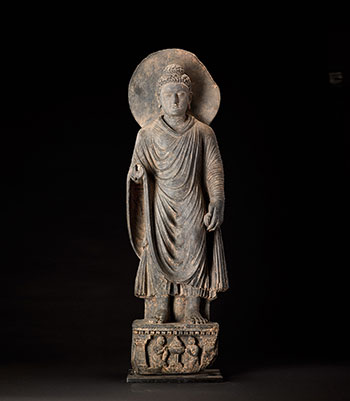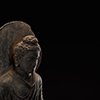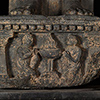From the collection of Mr Mikio Shimizu, an important Japanese collector in Gandharan Art, since 1990's
|
6058
AN IMPORTANT AND FINELY CARVED GRAY SCHIST OF STANDING BUDDHA, ANCIENT REGION OF GANDHARA
Circa 2nd / 3rd Century |
|
The Buddha wears a loose coat covering both shoulders and falling in folds over the body. He stands barefooted on a square plinth, and his facial features are both delicately handsome and solemn. His wavy hair is combed back and gathered into a bun (ushnisha) on the top of his head. In the middle of his forehead, between the eyebrows, is the baihao (white hair), a little round spot or curl which is a symbol of the Buddha. His almond-shaped eyes are looking downward, and his mouth is firmly closed. Behind and above him is a disc-shaped halo without any decorative patterns. |
|
Estimate
600,000 - 800,000 2,429,000 - 3,239,000 77,400 - 103,200
|
|
Sold Price 780,000
3,120,000
100,645
|
|
|
From the collection of Mr Mikio Shimizu, an important Japanese collector in Gandharan Art, since 1990's



